Moldy leather - Mouldy leather
Contents
Mould on leather
Leather can get mouldy or develop an unpleasant odour, mainly due to incorrect storage.
Ideally, leather should be stored at room temperature and a humidity of 40-60%. Adequate air circulation is also very important. Constant humidity of more than 70%, a high ambient temperature and lack of air circulation will contribute to growth of fungi and bacteria.
Also, the pH value plays an important role in creating an optimal environment for the growth of mould. Leather has a pH of about 4.5 to 5.5, putting it in the acidic range.
The viability of moulds as a function of pH is shown in the table below:
| Fungal species | Minimum | Optimum | Maximum |
|---|---|---|---|
| Alternaria | 2.7 | 5.4 | 8.0 |
| Aspergillus niger | 1.5 | 7.2 | 9.8 |
| Aspergillus flavus | 2.5 | 7.5 | 10.5 |
| Cladosporium herbarum | 3.1 | 7.7 | |
| Fusarium | 2.0 | 9.0 | |
| Penicillium | 2.0 | 10.0 | |
| Rhizopus stolonifer | 2.5 | 6.8 |
The optimum pH value varies depending on the fungal species. In principle, the pH of leather is good for the growth of mould. Changing the pH of the leather would prevent mould, but it would also damage the leather or allow it to age faster.
However, it is important to note that the pH value alone does not cause mould. Appropriate temperatures, suitable humidity and no ventilation create the environment for mould. It is therefore sufficient to take care of the other parameters, to prevent mould without altering the pH. Usually, even parking a car outdoors in various weather conditions without ventilation does not create mould. Mould therefore arises only in adverse situations. Unless the vehicle is moved, this is most frequent when stored in damp sheds or garages.
Mould in the manufacturing process of leather
Leather is not always produced from start to finish in one tannery. It is sometimes first tanned in one tannery and then processed to crust at another location. This can lead to longer storage and transporting times. A lot of leather is tanned in South America and then dyed and finished in Europe (mostly Italy).
Long periods of storage during transportation may lead to mould growth. To reduce this risk, leathers are treated with fungicides. The effectiveness is tested in climate chambers. When testing the leather for mould, it is stored at 30°C and 95-98% humidity. Then about 20 different mould spores are introduced into the chamber. Untreated leather suffers significantly after one week. Mould tests are stringent and require the leather to remain without infestation for at least 4 weeks.
Removing mould from leather
Whether mould can be eliminated just by cleaning it, or whether the cushioning material needs to be replaced, depends on the duration of the exposure of leather to unfavourable environmental conditions. Visible mould can usually still be removed, but the mouldy smell is the main problem.
Mould that emerges after a few months is usually removed by diligent cleaning. Cases in which the mould has been spreading over several years (inappropriately stored classic cars, can rarely be just cleaned. The reason is the inner core of the upholstery. In such cases, the entire interior (foams, fabrics, cotton, etc.) has been infected by germs and mould. Such heavy infestation can be recognised, because the unpleasant smell will linger despite thoroughly cleaning the surface.
This Porsche convertible was parked in an underground car park after an open drive in the rain. The mould was on all leather surfaces.
A mould-infested classic car seat. - A steering wheel with strong mildew.
Beetle Convertible. - Porsche in Lisbon, Portugal
Even after intensive cleaning, the mould spores are blown out with an unpleasant odour with every sitting on the upholstery. Trying to superimpose the bad mould smell with other odours won’t solve the problem, as this will only give it a mixture of the perfume used and the mildew smell. Such severe cases can only be solved by completely replacing the upholstery and the leather. Another argument for new upholstery is also the health aspect. Inhaling the mould spores can affect the health of children and people with weak immune systems.
Anti-mould agents were tested. Isopropyl alcohol and vinegar essence worked very well. Isopropyl alcohol cannot be used for leather as most leather surfaces are coloured, and these colour layers would get partially dissolved by isopropyl alcohol. Even with careful application it is not advisable. Vinegar essence (pH value about 2.0) kills the mould, but it also has a pleasant pH for future mould growth. As described above, this should not be a worry as long as the leather is not stored under mildew-friendly environments. Leather is always in the pH range where mould feels comfortable, but that does not automatically lead to mould growth.
Mouldy leather handbags from container shipping. - Furniture wrongly stored in a cellar.
Mouldy leather jacket and leather furniture -> All mouldy by container transport.
Mouldy motorcycle leather suits caused by incorrect storage in a damp basement.
Mouldy aniline leather furniture after keeping it in a cellar.
Black mould in leather
Black mould is much rarer in leather. More often it will occur in imitation leather on boats or in the headliner of a vehicle. The patches of black mould growing in the material can hardly be removed by cleaning. A pre-treatment with a blocker will be required prior to recolouring as such stains migrate to the top through a new colouration.
Black mould is in the material unlike white mould which stays on the top of the material. Cleaning will not be successful.
Mould treatment
When mould is white and hasn’t been on the leather for a long time, the chances of a successful cleaning are relatively good. In the case shown in the photographs, the car had been parked in a garage with no ventilation which resulted in an increase in the humidity levels. The time spent in bad storage was no more than 5 months. The mould had appeared on all soft surfaces, including the soft paint of the plastic parts. Cleaning it was hard work, but not complicated. The smell of mould was not strong and no longer perceptible after the cleaning process.
Thorough hard work of www.GlanzMobil.de and satisfaction for the owner.
How do I remove mold from leather?
![]() -> COLOURLOCK - THE TREATMENT OF MOLDY LEATHER
-> COLOURLOCK - THE TREATMENT OF MOLDY LEATHER
Fatty spew - Fat marks on leather
Caution! Not all whitish coating on the leather surface is mould. A well-known phenomenon that is visually very similar, to white mould is the fatty spew. This is whitish excess fat released by the leather. This appearance is often confused with mould. Prior to any treatment, therefore, this has to be accurately differentiated. Fatty spew can be removed by carefully heating the leather surface with a hairdryer (because the fat melts) - which is not the case with mould.
Fatty spew is not mould, even if it looks like it!
Other leather damages
- Typical leather damages such as ageing, fading, grease stains, discolouration etc.
- Dye transfer from leather
- Typical damage to PU leather in the furniture area
- Flamingo effect: Reddish discolouration with light furniture leather in hidden areas
- Bronzing: Metallic glimmer on new leather
- The transmigration of adhesives from the back of the leather on the front
- Fatty spue - Fat marks on leather
Additional information
Further information on mold treatment
![]() -> COLOURLOCK - THE TREATMENT OF MOLDY LEATHER
-> COLOURLOCK - THE TREATMENT OF MOLDY LEATHER
![]() -> In German: www.lederzentrum.de
-> In German: www.lederzentrum.de
![]() -> Rest of the world: partners worldwide
-> Rest of the world: partners worldwide









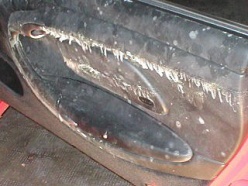
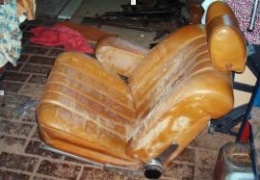




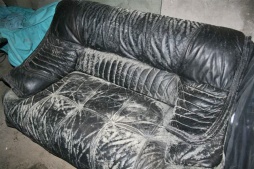


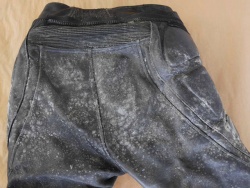



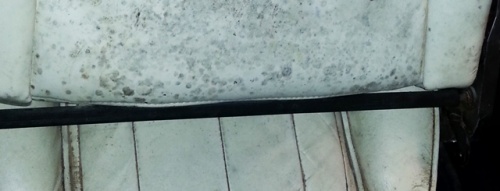

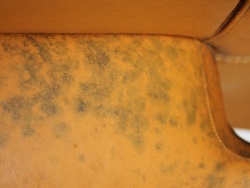

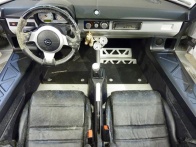





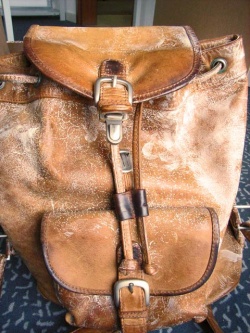
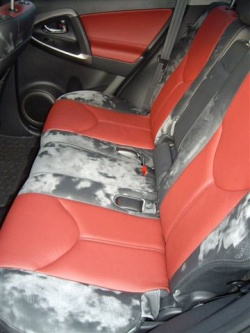

 a kotori web solution
a kotori web solution